The Dead Sea… what you need to know.
— What to do at the edge of the Dead Sea: float in the sea for a few minutes, get out, get muddy, go back and wash off, swim in the hotel pool or lay in the sun. Â Repeat as necessary.
You access the Dead Sea through public beaches or resorts — in other words, places where there are fresh water showers to wash off when you come out of the water. Â A resort plus: there are mud pots full of Dead Sea mud to give yourself a spa treatment. Â The mirrors are for making sure you’ve covered all your exposed skin.
Another resort plus: shoes. Â Because the shoreline is rocky and you want to protect your feet as you climb up for mud and down to wash and float.
The shoreline is not just rocky with rocks. Â There are actual rocks of salt.
The Dead Sea is roughly 8-10 times the salinity of the Oceans. Â This is because of high levels of evaporation, which leaves behind a very salty dead-end waterway.
The salt clings to rocks in very cool formations all along the shoreline.
The air is also 8% more oxygenated than at sea level. Â The water itself is oily: full of not only salt, but other minerals. Â Your skin really DOES feel amazingly smooth and rich after a dip and a mud bath. Â The air has a haze that blocks harmful UV rays, so you’re much more protected from sunburn than in other places. Â One of our guide books said that German health insurance covers periodic trips to the Dead Sea to treat types of skin disorders, because the water and mud is that good for skin!
The swim itself is truly bizarre — a unique experience to be sure. Â The water is warm, even in December when the air has a hint of 65-degree chill. Â It was windy on the day we went down for our dip in the water, with actual waves coming ashore. Â We used a protected inlet along the shoreline by the resort to get into the water.
Without question, you FLOAT on this sea.  It can actually be a little scary, as people drown in high numbers on the Dead Sea each year.  Since we normally swim face down in fresh and sea water, it’s natural to turn your body that way in the water… only doing in the Dead Sea so pushes your heavier end (legs and bottom of your torso) out of the water and forces your head down.  A few drops of that salty water in your eyes is excruciating — and a few swallows will poison your system.  Without the ability to get your head out of the water and all the trauma going on while your head is down there… best to play it safe and stay on your back.
Kate floated with me in the shallows. Â Because I was holding her with my arms, and not paddling them under the water to stay in place, the wind pushed us a little to one side of the inlet. Â It was only a few feet. Â But when I went to stand up to get back to shore, I found that my feet didn’t touch the bottom. Â Thankfully, I kept myself from completely freaking out… held her upright, and paddled my legs under us until we were back the few feet to where I could put her down and climb back to where we could stand. Â In an instant, I knew exactly how easy it could be to drown… if I had tried to swim her in (which I would have done in a pool) my body would have flipped in an instant! Â Also, a note: the shoreline drops quickly and without warning! Â Be careful of the depth.
After the deep(er) water experience with Kate, we made sure we stayed in water where our arms could still touch the bottom while floating. Â You float so high on the water that there isn’t any need to go more than a foot or so deep.
Also, the water tastes TERRIBLE. Â I described it as like licking a barnacle-covered salt block that has been at the bottom of the ocean for a hundred years.
It’s a really cool experience, and the sea itself is strangely beautiful and calming. Â Seeing the mountains of Israel from the Jordanian side just adds to the mystery and beauty of the area.
After your dip, you shower off to rinse the salt off your skin (you’ll want it off soon after you get out). Â The wind was chilly, so we kept Kate wrapped up.
Then you go get mud!  The mud is very warm (dark color retains heat from the sun!) and it feels great.  The mud itself is thick and lumpy, full of ocean debris — the kind of mud you dream of using as a kid to make mud pies.  It was VERY fun to put it on!  Kids aren’t recommended to be fully covered, so we invited them to cover us.  We did use mud on the back of one of Kate’s legs, where she has lingering rashes and some scaring from molluscum contagiosum (our pediatrician calls this “the new chickenpox”).  We noticed the next morning that it looked much better — the mud and water DID make a difference, just from our short morning in the Sea!
Evidence of our playing in the mud…
After you’re muddy, you go back to the Sea to wash off. Â Fresh water would take FOREVER to wash off… you need the mineral content of the Dead Sea to get the Mud removed.
Mud removal on my face was how I experienced having water-in-eyes and water-in-mouth (actually, I just tasted some that was on my lips, that was enough). Â The eyes and mouth and water combination was not pleasant, though I loved the way my face felt after!
Once we were washed off, we took another dip in the fresh water and were done!
With a stop for more washing off of sand before leaving the beach area and hitting the pool deck!
If we are able, we’d love to go back again before we leave Jordan — just to enjoy the sun, mud, and healing waters!
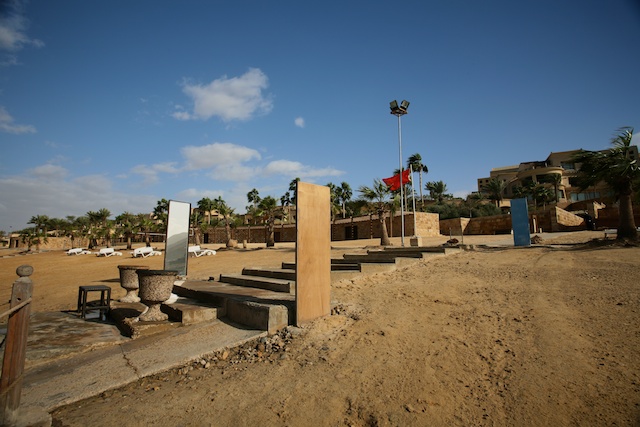
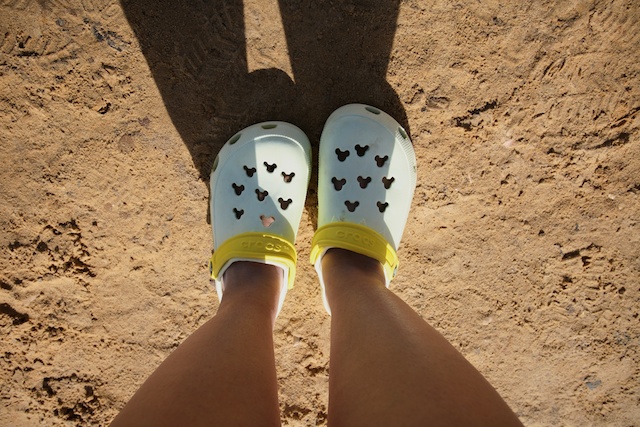
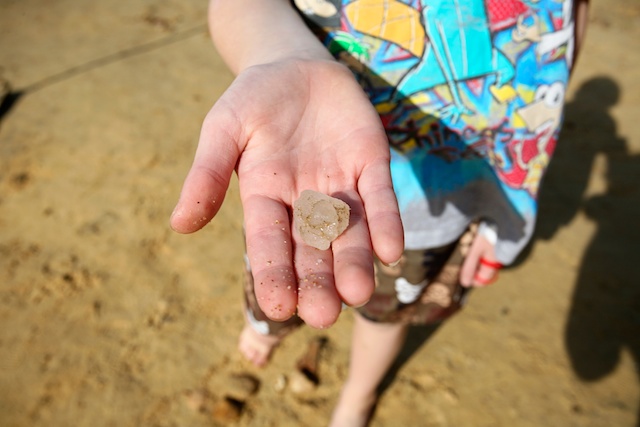
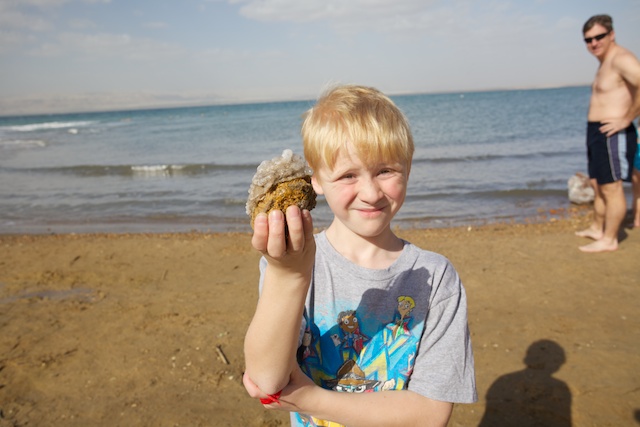
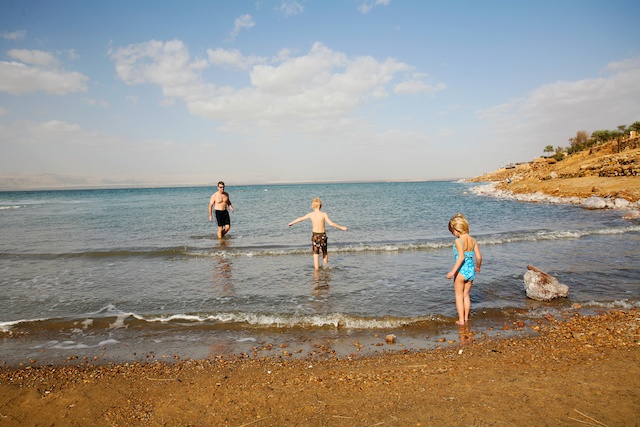
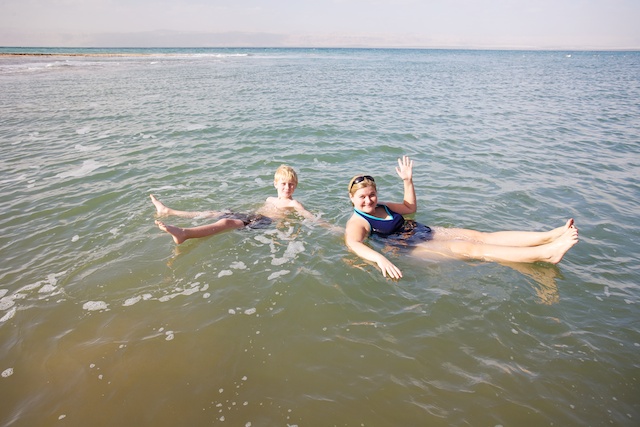
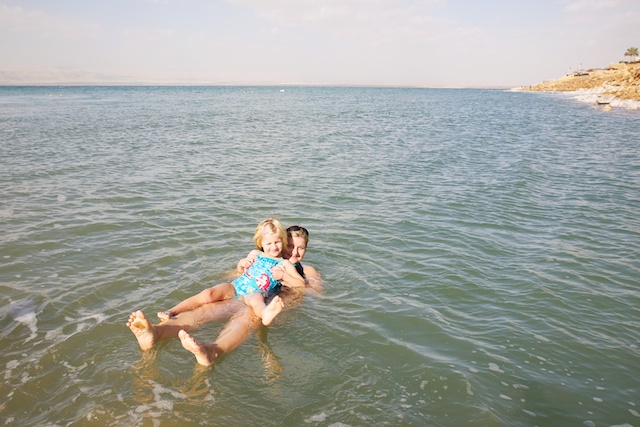
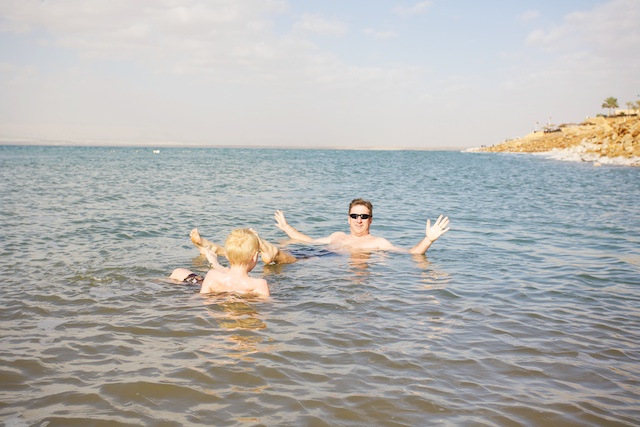
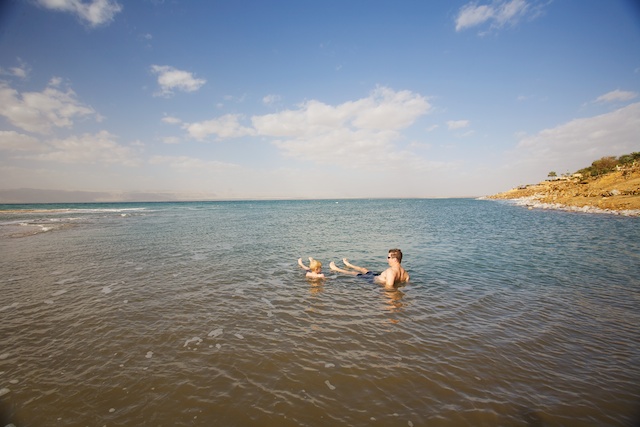
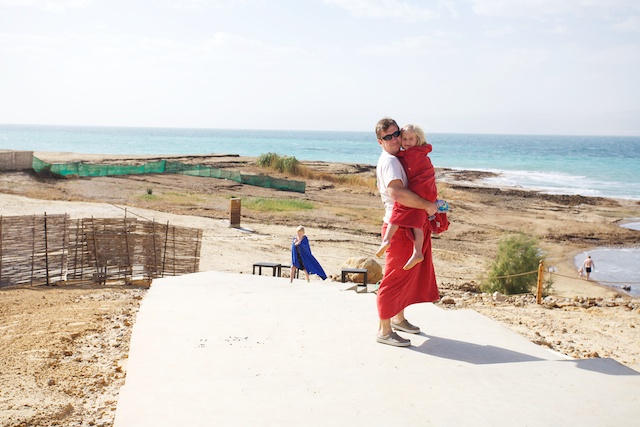
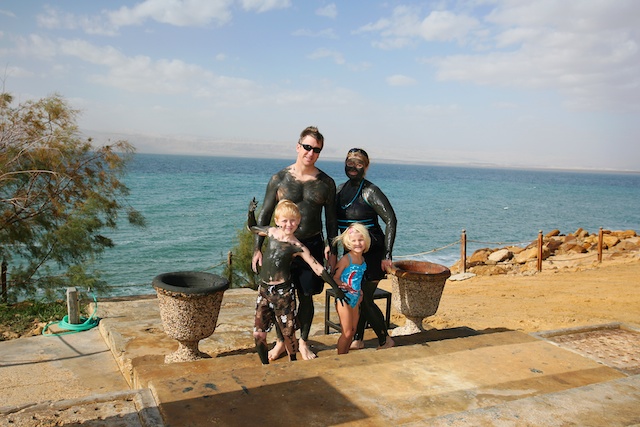
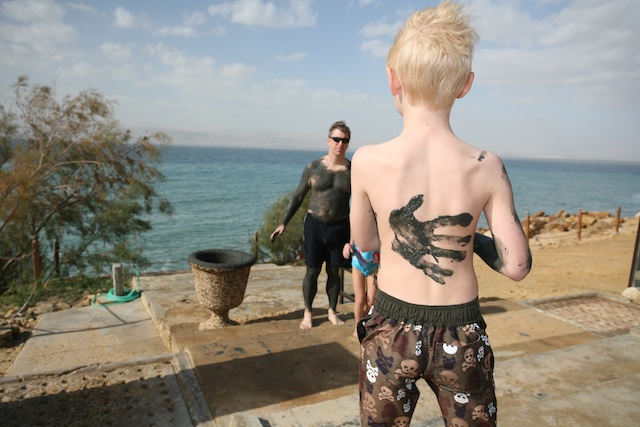
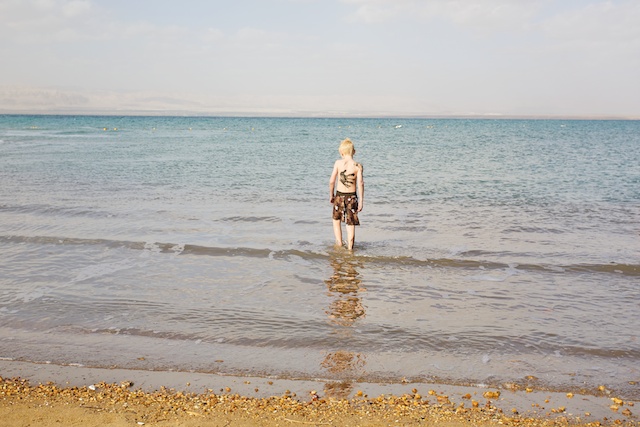
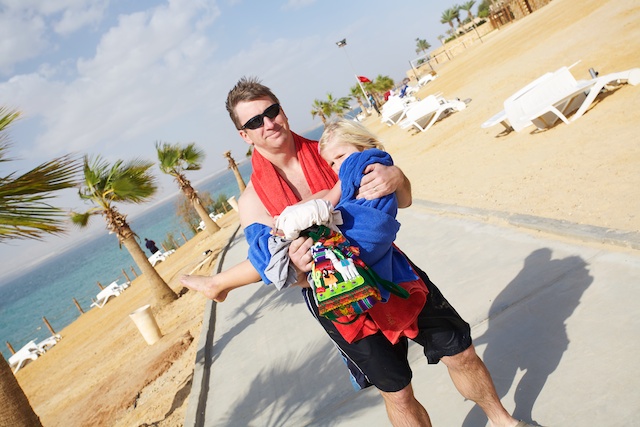
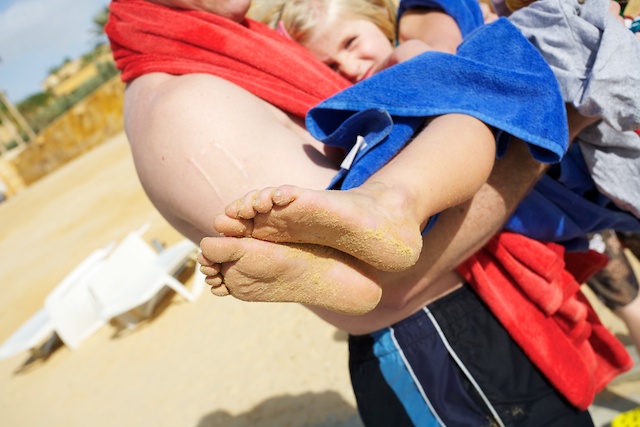















Post a Comment